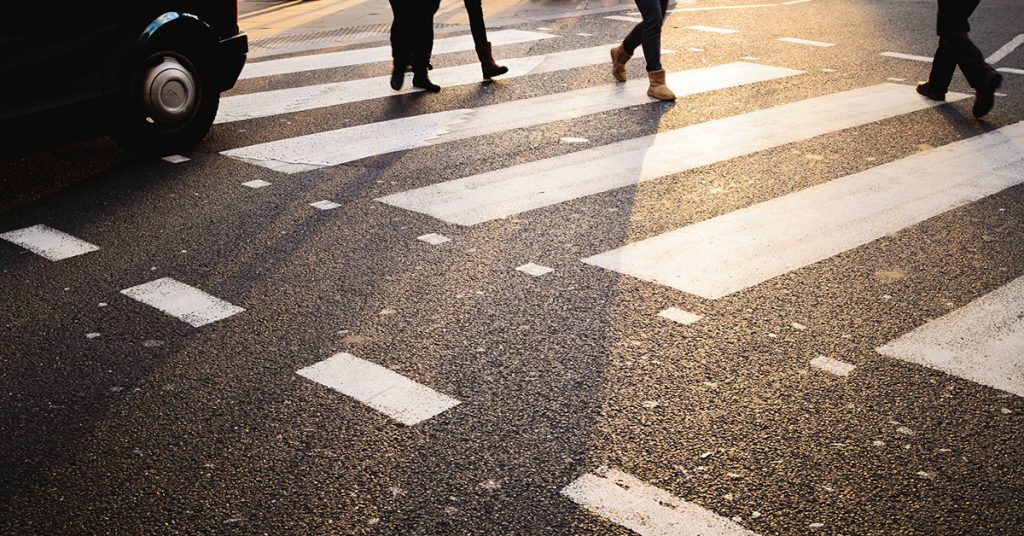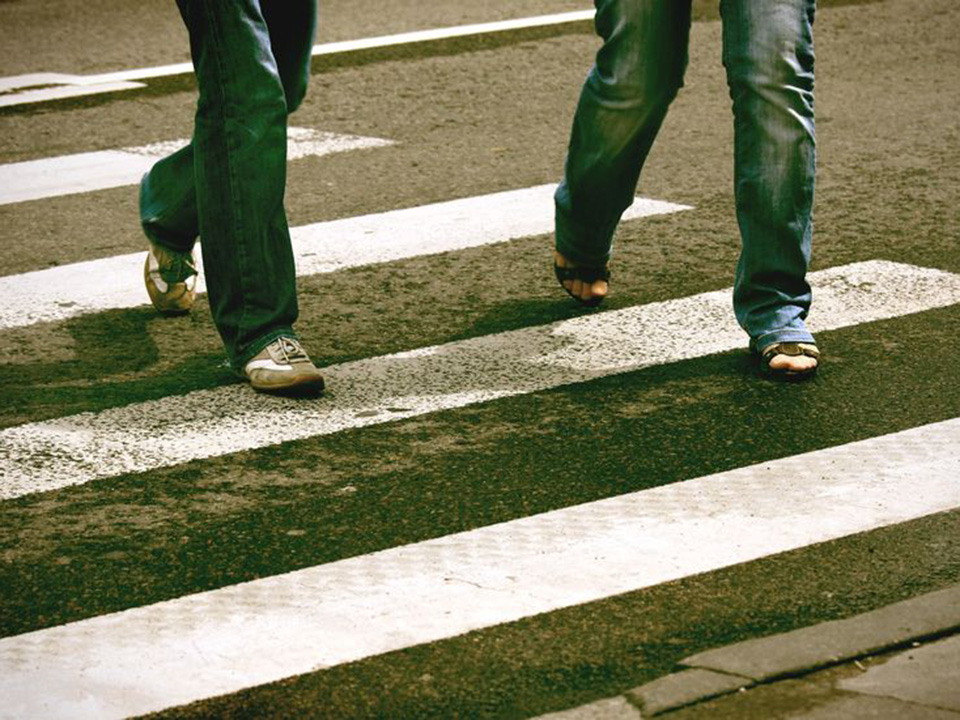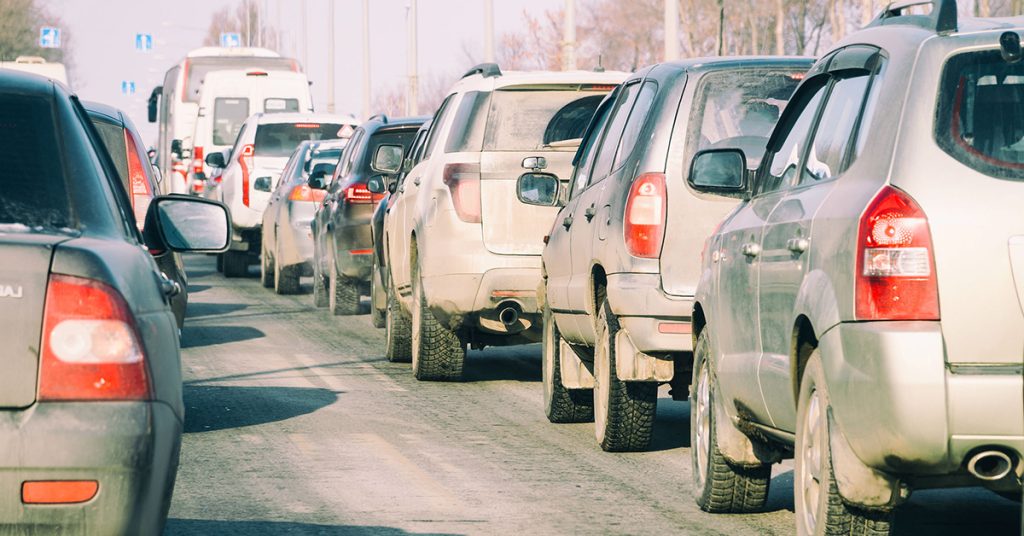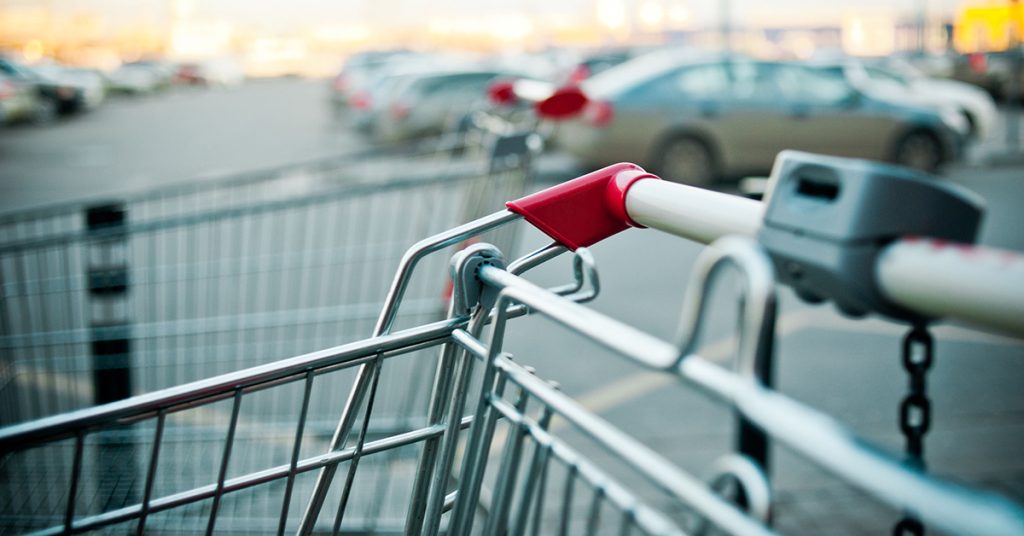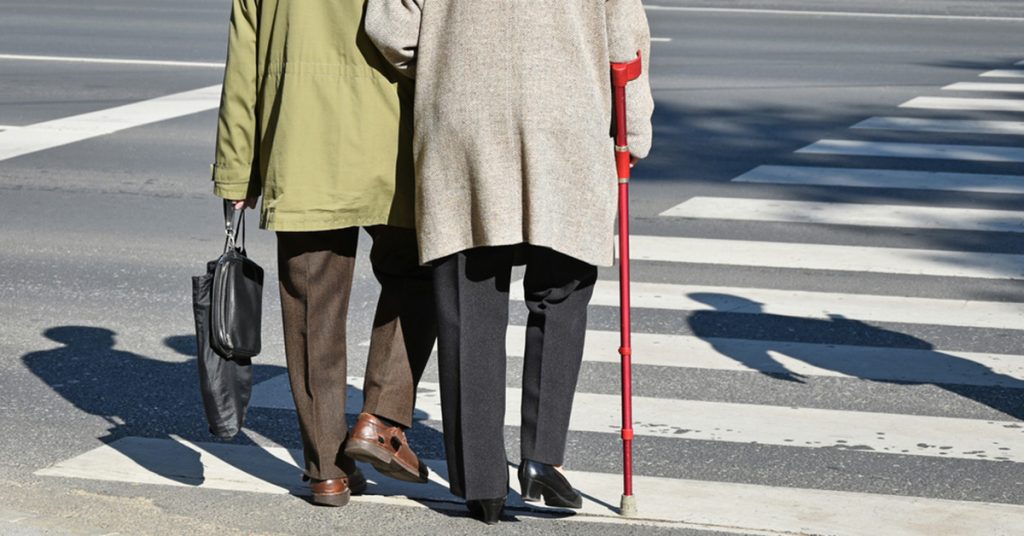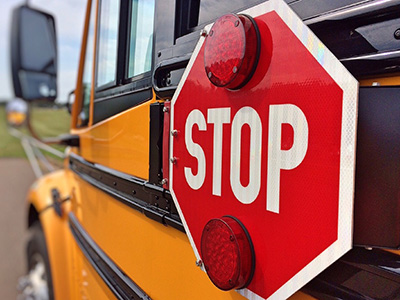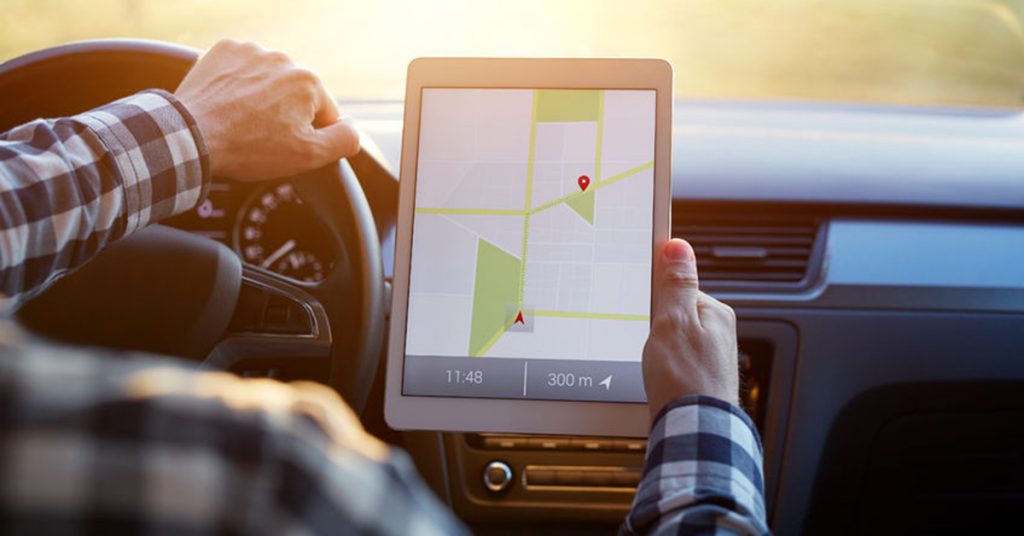Pedestrian Accidents
In Somerville, Second Hit-and-Run Pedestrian Crosswalk Crash Claims Life
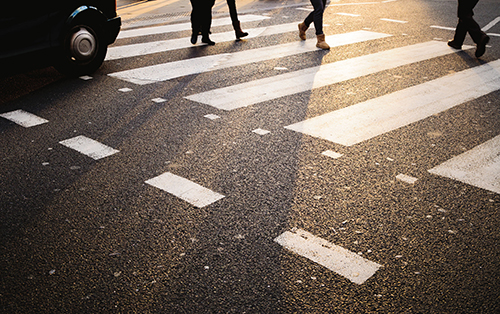
Somerville has seen at least two fatal pedestrian crosswalk crashes during 2019. The news media has reported both were hit-and-run crashes.
A driver was tragically killed in a Somerville crosswalk over the weekend. The victim was struck on Saturday night around 8 p.m. as she crossed along Mystic Avenue (Route 38), near McGrath Highway and Stop & Shop.
The victim, a Somerville resident, was transported from the scene and later pronounced dead at Massachusetts General Hospital (MGH). Meanwhile, Massachusetts State Police began investigating and searching for the driver, who had fled the scene. The 64-year-old Roxbury man turned himself in Sunday morning and was charged with leaving the scene of a crash causing personal injury or death and a crosswalk violation, according to WBZ Boston. He pleaded not guilty at arraignment today in Somerville District Court, where prosecutors revealed a few details about the crash. The driver admitted to drinking two glasses of wine at dinner before the crash and said he initially stopped because he suspected he had hit someone. He was allowed to remain free on $1,000 bail on the condition he refrain from alcohol. He is not allowed to drive.
According to StreetsBlog Mass, the crosswalk is located along Mystic Avenue. It provides pedestrians with access to the Kensington Underpass, which runs under I-93 and connects most of Somerville’s residential neighborhoods to businesses and offices in the Assembly Square district.
This is at least the second fatal pedestrian crosswalk accident in Somerville this year. Both were hit-and-run crashes. In February, a beloved 40-year-old educator was walking in a crosswalk at the Harden Road and Powderhouse Boulevard intersection. She was hit by a truck which never stopped and died from her injuries. Somerville Police had to launch a regional search. Days later, police found the 55-year-old Norwood driver, with help from a Tufts University police officer who spotted the truck parked on University Avenue in Medford. Still damaged, the truck was parked just a mile from the site of the pedestrian hit-and-run.
Tips for Driving Safely Near Pedestrians
Pedestrian accidents are often serious and life-threatening. You have probably heard this before, but drivers really can prevent most pedestrian injuries by slowing down and focusing on the road. Most people drive faster than they realize. According to AAA, when you adjust your speed from 25 mph to 35 mph, you double your risk for causing a fatal pedestrian accident.
Our safety tips for drivers:
- Travel the speed limit or lower when appropriate in neighborhoods and areas near stores and restaurants.
- Travel slowly through parking lots; never cut across parking lots or check cell phones.
- Always stop for pedestrians in a crosswalk.
- Take caution when driving at night.
- Older drivers should have regular vision exams and monitor their driving.
- Watch fatigue.
- Use GPS before you start driving.
- Do not use your cell phone for any reason. Even hands-free technology can be a distraction, especially during the summer months and for night driving.
- Never operate a motor vehicle while intoxicated or while under the influence of marijuana.
- Put down drinks and food.
- Talk to your family. If anyone is ever in an unimaginable situation and has hit a pedestrian or bicyclist, tell them to stop, call police and wait at the scene.
- Leaving the scene is against the law in Massachusetts. If the driver leaves the scene, the victim may not get the medical care they need to survive. Minutes and seconds matter.
Beyond preventing injury, it’s in your best interest to slow down if you don’t want a ticket. More than 40 Massachusetts communities have now established slower, 25 mph default speed limits. Massachusetts sets a 30 mph default speed limit for communities. But under state Municipal Modernization Law passed in 2016, individual cities and towns can opt into a 25 mph speed limit instead in thickly settled areas and business districts. They can also create 20 mph work safety zones. Communities cannot alter speed limits on state roads.
Next time you enter one of these communities, watch for the speed limit signs as you enter. Boston, Cambridge and Somerville are among the communities which have adopted the lower 25 mph speed limit. The City of Somerville implemented a 25 mph speed limit citywide as soon as the state law took effect back in 2016. It also pursued 20 mph limits in work safety zones.
Breakstone, White & Gluck – Free Legal Consultation
Breakstone, White & Gluck is known for our extensive experience handling personal injury cases and our superb results for those injured and their families throughout Massachusetts. We invite you to learn about our results after pedestrian crashes.
Our Boston personal injury attorneys specialize in representing those injured in pedestrian accidents involving crosswalks and other pedestrian car accidents. If you have been injured, it is critical to learn your legal rights for seeking compensation and learn about the process ahead. For a free legal consultation, contact Breakstone, White & Gluck at 800-379-1244 or 617-723-7676 or use our contact form.
City of Boston Pursues 20 MPH Speed Limit to Reduce Traffic Fatalities and Pedestrian Injuries
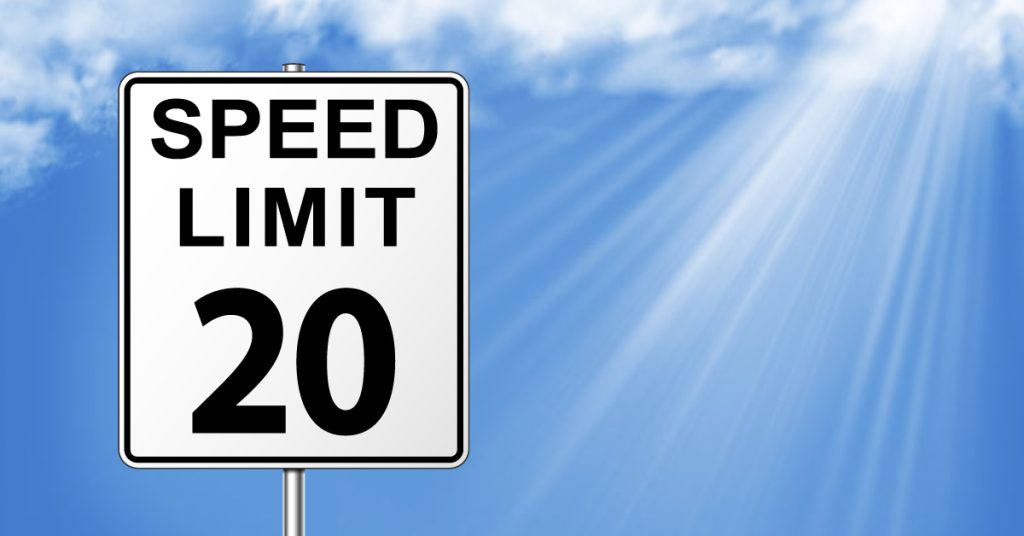
In Boston, city officials are interested in lowering speed limits to 20 mph in neighborhoods to reduce traffic fatalities. The proposal comes just two years after the city lowered speeds from 30 to 25 mph and will require state approval.
First, the City of Boston dropped speed limits to 25 mph, with a goal of reducing traffic fatalities and pedestrian injuries. Now, Mayor Marty Walsh and the Boston City Council have their eyes on 20 mph on neighborhood streets. The next step is obtaining state approval.
The City of Boston first sought to lower speed limits as part of its VisionZero campaign a few years ago. That proposal also required approval from the state Legislature and Gov. Baker’s signature.
Gov. Baker signed the Municipal Modernization Bill into law in 2016, including language that allowed cities and towns to lower the default speed limit from 30 to 25 mph. Cities and towns can now lower speed limits on all (or select) municipal roads in thickly settled areas or business districts. Many communities have done so, including Boston, Cambridge, Quincy, Arlington and Dedham. Now, unless traffic signs are posted otherwise, it’s 25 mph in these communities.
While the speed limit in these communities has dropped, the fines remain the same. In Massachusetts, speeding carries a $105 fine for speeding. If you exceed the speed limit by 10 mph, there is an extra $10 fine per each mile per hour.
Boston was the first to approve lower speeds, with this taking effect in January 2017. But the City of Boston’s goal was always 20 mph and remains so for city neighborhoods. In fact, the Boston City Council approved a 20 mph speed limit back in 2016.
As the City of Boston pursues a 20 mph speed limit for neighborhoods, there is early data showing that the 30 to 25 mph drop has changed traffic patterns for the better. According to an Insurance Institute for Highway Safety study, after the lower speed limit took effect, Boston saw a 29 percent reduction in traffic traveling over 35 mph.
Mayor Walsh also announced other transportation initiatives last week, including the creation of special drop-off and pick-up sites for Uber, Lyft and other ridesharing vehicles. Data from the Massachusetts Department of Public Utilities confirms that Boston is the truly the hub of ride-hail services. During 2017, nearly 35 million rideshare trips began in the city. Boston saw more than 6 times as many rideshare starts as Cambridge, which has the second largest presences in Massachusetts.
Walsh’s other proposal is to give every student in the Boston public school system a MBTA pass. The price tag hasn’t been negotiated yet with the MBTA. Currently, the city receives a subsidy from the MBTA and pays $5.6 million for MBTA passes for students in Grade 7 and 8 who live more than a mile and a half from their schools.
Data That Supports 20 MPH
- According to the VisionZero Network, 9 out of 10 pedestrians who are hit by a vehicle traveling 20 mph survive. Increase the speed to 30 mph and the survival rate drops to 50 percent. At 40 mph, just 10 percent of pedestrians survive.
- Speed is a factor in nearly one-third of all traffic deaths in the U.S. (Source: VisionZero Network).
- Speeding crashes claimed the lives of 59,374 people on U.S. roads from 2010 to 2015 (Source: VisionZero Network).
- Cars speeding through red lights are a leading cause of urban car crashes, according to the Insurance Institute for Highway Safety. Some states and local communities permit use of red light and speeding cameras to improve enforcement. But many do not, including Massachusetts and our neighboring New England states. Rhode Island is the one exception, allowing red light cameras by state law and city ordinance. State law permits use of speeding cameras in school zones on weekdays.
Related:
Walsh to propose 20 mph limit in neighborhoods and new Uber, Lyft pickup sites, Boston Globe, March 7, 2019
Slow Down! Boston, Cambridge and Other Cities Have Dropped Speeds to 25 MPH, Massachusetts Injury Lawyer Blog, May 23, 2017
After Fatal Pedestrian Crash, City of Somerville Looks at Traffic Calming Measures
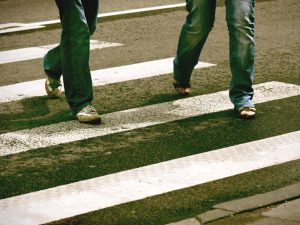
Somerville residents are asking for new traffic calming measures after a fatal pedestrian crash last weekend on Powder House Boulevard and Hardan Road. Police are searching for the driver, who fled the scene.
The Somerville community is wrestling with the horrific crash that killed a teacher in a crosswalk last Friday night.
Somerville Police are still searching for the driver in the Somerville pedestrian crash. The driver struck Allison Donovan, an educator in the Watertown public school system, shortly after 7 p.m. Friday, then fled the scene. Another woman in the crosswalk suffered non-life-threatening injuries.
As police investigate, city officials say a community meeting will be held to discuss accelerating traffic calming measures for the area. The pedestrian accident happened on Powder House Boulevard, at the intersection of Hardan Road, near the West Somerville Neighborhood School. In response to the crash, the city began setting up flex posts with neon reflectors Monday.
For the short term, Somerville Police will be there to assist students who are dropped off and picked up at the West Somerville Neighborhood School. Message boards are also being deployed in the area along with the flexposts.
But residents are now calling for more, including speed bumps to force drivers to slow down.
Traffic Measures to Change Driver Behavior
Communities can implement traffic calming measures to change driver behavior and improve safety conditions for non-motorized street users. Speed bumps and raised intersections are two examples of traffic calming measures. Other examples may include protected bike lanes and cycletracks which allow cyclists to travel inside curbing and away from cars, trucks and rideshare vehicles.
Different areas may require different traffic calming measures. Some communities may address a single intersection or street. But often, communities are working on larger areas.
Slower speed limits are another traffic calming measure. Boston, Cambridge and Somerville were among the first communities to reduce speeds to 25 mph a few years ago, when the state gave communities this authority.
In Somerville, city officials have already implemented many traffic calming measures, including on Powder House Boulevard, which has received physical and painted sidewalk bumpouts, improved crosswalk markings and flashing stop and crosswalk signs and vertical reflective crosswalk markers. In the City of Somerville’s online update, it also noted there is a flashing pedestrian activated crosswalk sign at the intersection near Hardan St. This is where the pedestrian crash happened.
But this spring, Somerville city officials had planned additional traffic calming measures on Powder House Boulevard, between Curtis Avenue and North Street (the fatal pedestrian accident happened in this area). Speed bumps and traffic tables were already on the schedule to be considered after the completion of bike lanes and sidewalk bumpouts. Now, city officials say they are seeking options to bring in speed bumps and traffic tables sooner.
About Breakstone, White & Gluck – Free Legal Consultation
The Boston personal injury lawyers at Breakstone, White & Gluck specialize in representing those injured by pedestrian accidents and other car accidents. Over the past three decades, our attorneys have helped pedestrians and their loved ones understand their legal rights and obtain the full compensation they need for their injuries. When a loved one is lost, a surviving spouse or the decedent’s children may be able to pursue a wrongful death claim against those who were negligent. Our attorneys are experienced in representing families in wrongful death claims in Massachusetts.
For a free legal consultation, call Breakstone, White & Gluck: 800-379-1244, 617-723-7676 or use our contact form.
Drive Safely: Holiday Dash in Boston Starts Mid-Week
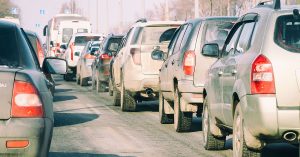
As a record-number of holiday travelers hit the road, Boston will be especially hard hit this week, according to AAA’s travel forecast.
However you celebrate, we hope you enjoy a festive holiday season, filled with friends, family, holiday events or volunteering.
But most of all, here at Breakstone, White & Gluck, our attorneys hope you commit to travel safely during the holidays. While it’s the season for giving, Thanksgiving to New Year’s brings some of the most dangerous days on the roads.
AAA is forecasting a record-breaking 112.5 million holiday travelers – or 1 in 3 Americans. This represents a 4.4 percent increase over last year. More than 102 million will travel by car, the highest number in 17 years. The forecast holds bad news for Boston though. On Wednesday afternoon, we could end up with one of the longest commutes in the nation.
Tips for driving safely for the holiday season:
Plan for Boston holiday travelers. AAA and INRIX forecast this Thursday, Dec. 20th, will be the most congested day nationwide. Boston is on a list of 10 holiday hot spots, with the worst travel expected on Wednesday, Dec. 19th. The absolute worst time to drive is 3:30 to 4:30 p.m. that day and you can expect the commute to take 3.5 times as long. It’s hard to believe the forecast is so terrible. It’s based on historical data and recent travel trends.
Unfortunately, this heavy traffic won’t just impact those starting their holiday commute; it will also challenge workers, school buses, delivery services and just about all of us.
Make a plan. Take public transportation if you can. Adjust your work hours if your employer allows it. Services like Waze and Mass511 can help you navigate and take away some of the stress.
Buckle up. Wear your seat belt at all times. When driving others, ask if they are buckled up before you start moving. People really need the reminder. Even after years of safety campaigns, nearly 10 percent of Americans are still not wearing seat belts, according to the National Highway Traffic Safety Administration (NHTSA). In 2016, seat belts could have saved more than 2,400 people killed in car accidents (Source: NHTSA).
The day before you travel, also take time to check your children’s car seats, so they are properly secured.
Plan enough space for holiday gifts. When traveling with gifts or food, make sure you leave enough space so you can see through your windows.
Watch your speed, especially near pedestrians. Speeding is involved in one-third of all traffic fatalities, according to the NHTSA. It is also a leading cause in car accidents which injure pedestrians. Commit to traveling the speed limit or slower if you need to adjust for weather conditions, dark roads or unfamiliar areas. Have patience in parking lots and remember, during the holiday season, pedestrians may be out later at night.
Drive sober. If you celebrate outside your home, our suggestion is to skip the alcohol and focus instead on all you are grateful for this year. If you plan to drink, choose a designated driver whom you trust not to drink. As a backup, install the Uber and Lyft apps on your phone.
Drunk drivers killed 10,874 people in motor vehicle crashes in 2017, representing 29 percent of all traffic fatalities in the U.S., according to the NHTSA. Here in Massachusetts, drunk drivers caused 34 percent of all traffic deaths.
As personal injury attorneys who represent those injured by drunk drivers, we know firsthand that when someone is killed by a drunk driver, nothing is ever the same for the family. Drunk driving accidents are senseless, entirely preventable had the driver just made a better decision.
As for drunk drivers, they can be criminally charged and expect to face a civil lawsuit, as can others in certain cases, including bars and restaurants in liquor liability cases.
Marijuana will be in greater supply this year, after retail stores have opened for recreational marijuana sales in Massachusetts. Use good judgment. Do not consume marijuana when you are driving. Users are about 25 percent more likely to crash than other drivers, according to the Centers for Disease Control and Prevention.
No distracted driving. We cannot say it enough: it’s critical to put your cell phone away when you are driving, especially in heavy traffic. Tell your loved ones your phone is off the hook until you stop driving and turn your engine off. Stay committed to that. Don’t engage in texting while driving, reading e-mail or checking Facebook when driving.
Have your directions ready in advance. If you are driving long distance with children, make sure you have snacks, books, coloring sets or games prepared. If possible, drive with another adult so they can respond to your children and make an emergency call if necessary.
Finally, plan ahead and decide where you want to take rest breaks.
Emergency supplies. Do everything you can to ensure you reach your destination safely. Carry cash, a credit card and an emergency kit containing: a mobile phone charger, a first-aid kit, water and snacks, a flashlight and extra batteries, warning flares, jumper cables and a basic tool kit. And don’t forget ice scrapers, shovels and blankets.
Additional resources:
AAA’s Holiday Travel Forecast for 2018
National Highway Traffic Safety Administration
2017 Data: Alcohol-Impaired Driving, NHTSA
About Breakstone, White & Gluck
Free Legal Consultation: 800-379-1244
For more than 25 years, Breakstone, White & Gluck has represented those injured by car accidents in Massachusetts. Our Boston car accident lawyers are known for our top results for clients and their families. We have consistently been recognized for our results, including by Massachusetts Super Lawyers, Top 100 New England Super Lawyers and Top 100 Massachusetts Super Lawyers.
If you have been injured, learn your legal rights. For a free legal consultation, contact Breakstone, White & Gluck at 800-379-1244 or 617-723-7676. You can also use our contact form.
Holiday Season Brings Rise in Car Crashes, Parking Lot Accidents
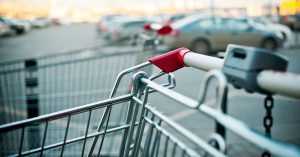
Parking lot crashes are more likely in Boston and Massachusetts this time of year, as holiday shoppers are out. What can you do to prevent accidents? Put down your cell phone, slow down and always watch for pedestrians.
When you finish your holiday shopping, and start to head home, you may be tempted to pick up your cell phone and call someone. But the parking lot is not a safe place and the holidays are not the season.
Unfortunately, car accident claims typically rise during the holidays, as many of us head out shopping or to enjoy holiday lights. According to the National Safety Council (NSC), the increase begins around Thanksgiving and Black Friday. We are now approaching one of the worst stretches, the days just before Christmas.
At Breakstone, White & Gluck, our Boston personal injury lawyers urge you to travel slowly and set aside distractions to prevent parking lot crashes. Too many drivers are engaging in these distractions, according to this recent National Safety Council poll:
- 66 percent of drivers nationwide said they would make phone calls while driving through parking lots.
- Teens were less likely to make phone calls than adults (60 percent).
- Another 63 percent said they would program GPS systems.
- More than half, 56 percent, said they would text and 52 percent said they would use social media.
- Another 50 percent said yes to sending or receiving e-mails, while 49 percent said they would take photos or watch videos.
- More than half of all teens and adults also admitted they would take time for personal grooming (59 percent of teens; 53 percent of adults).
Tips for Preventing Parking Lot Crashes
- Drive slowly. Give yourself plenty of time to react to pedestrians and other vehicles.
- Do not cut through parking lots; follow the traffic lane.
- Avoid distracted driving activities, such as cell phone use, texting, listening to loud music and engaging in intense discussion.
- Choose your place to check electronics, such as before you leave the mall or store.
- Use blinker signals.
- Obey stop signs and other signs. Back out carefully.
- Always watch for pedestrians in the parking lot and at the entrance. Be extremely patient and always wait for them to reach the sidewalk before moving.
- Walk all the way around your vehicle before stepping inside, looking for pedestrians and parents with small children and baby strollers.
- Consider parking away from other cars to avoid shopping mall parking lot crashes.
The Impact: Parking Lot Crashes
The Insurance Institute for Highway Safety reports parking lot crashes account for about 20 percent of all auto claims. The NSC reports on average each year, there are 60,000 injured by parking lot crashes and 500 or more who die. Pedestrian accidents account for many parking lot crashes. Backup accidents are responsible for nearly 10 percent of fatal pedestrian crashes in parking lots.
Over the past few years, a number of pedestrian accidents in Massachusetts parking lots have been fatal. In 2017, a Trader Joe’s employee in Acton was killed. A year earlier, a 52-year-old woman died in Wilmington, outside a Rite-Aid. In 2015, a pedestrian was killed in the parking lot of the Cloverleaf Mall in Natick, just across the street from the Natick Collection (or the old Natick Mall).
Cell Phone Use and Massachusetts Law
Eight years ago, Massachusetts banned texting while driving. If you are texting or writing an e-mail and cause a car crash, you could be cited by police. If you injure another driver, the police citation could be used in a civil lawsuit to prove your negligence and you will have to pay compensation to the victim.
All but three states have texting while driving bans. Hand-held cell phone bans are a different story, with just 16 states approving bans. Hand-held cell phones are still permitted when driving in Massachusetts, but safety advocates urge drivers not to use them, especially in parking lots. In a matter of seconds, a simple act such as trying to look up GPS directions or dialing a friend can lead to a serious and possibly fatal accident.
Free Legal Consultation: 800-379-1244
If you have been injured in a parking lot crash, it is important to learn your legal rights for seeking financial compensation under Massachusetts law. Contacting a Boston car accident lawyer promptly is essential so they can act quickly to protect your rights.
At Breakstone, White & Gluck, our lawyers have over 100 years combined experience representing those injured in auto collisions. For a free legal consultation, contact us at 800-379-1244 or 617-723-7676 or use our contact form.
New Federal Recommendations to Reduce Pedestrian Fatalities and Injuries
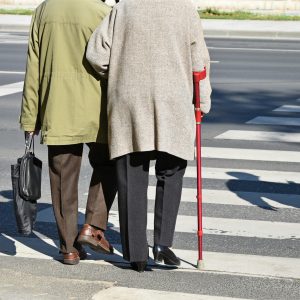 Pedestrians are facing a crisis on the roads, here in Boston and across the country. From 2009 to 2015, there was a 46 percent increase in pedestrian deaths across the U.S. (Source: National Highway Traffic Safety Administration).
Pedestrians are facing a crisis on the roads, here in Boston and across the country. From 2009 to 2015, there was a 46 percent increase in pedestrian deaths across the U.S. (Source: National Highway Traffic Safety Administration).
Now, the National Transportation Safety Board (NTSB) is stepping in with a comprehensive set of recommendations to improve safety, including: Read More
Expect Traffic Enforcement As Students Head Back to School in Massachusetts
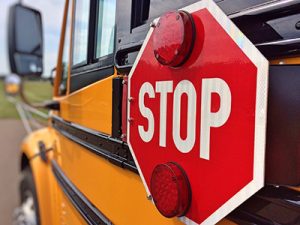
With students back to school in Massachusetts, local police departments are stressing safety around school buses while stepping up enforcement of drivers who fail to stop for pedestrians in crosswalks.
If a traffic enforcement sting came to your community, how many drivers would be stopped and cited for unsafe driving? Would you be among them?
We ask these questions as students head back to school across Massachusetts, in communities from Boston and Cambridge to Plymouth and Brockton to Worcester and Springfield.
Police departments across the state have set up traffic enforcement over the past few weeks, focusing on drivers who are not stopping for pedestrians in crosswalks and school buses. A few of the communities include New Bedford, Attleboro and South Boston.
In South Boston, the surveillance followed the tragic death of a 2-year-old in a traffic crash. The child was being pushed in a stroller on the sidewalk, when a van and car collided. The van plowed onto the sidewalk, injuring and ultimately killing the young boy. A day after the crash, the Boston Police Department and Massachusetts State Police set up a traffic enforcement initiative focusing on crosswalk enforcement, speeding and other unsafe driving behaviors. Within a few days, officers had issued approximately 500 citations for traffic violations. This is a very telling number, one Massachusetts drivers can’t ignore.
Breakstone, White & Gluck is a Boston law firm which specializes in personal injury, medical malpractice and car accident cases. Our firm is committed to safety for children, giving away over 20,000 bicycle helmets to children in Massachusetts through our Project KidSafe campaign. With experience representing clients who have been injured in pedestrian crosswalk accidents and other traffic crashes, we offer these tips for safe driving:
Slow down at crosswalks. Students who walk to school may have a crossing guard help them across the street. Always slow down as you approach crossing guards and children. Make eye contact with the crossing guard and assume you should stop. The crossing guard will wave you through when it’s safe to go.
But even when there is no crossing guard, drivers must stop for pedestrians in the crosswalk when there is a “Walk” or green signal. Other times, drivers have a responsibility to yield the right of way by slowing or stopping for pedestrians in the crosswalk. This includes times when pedestrians are in the crosswalk on the same side as the driver and when pedestrians are approaching from the other half of the lane and within 10 feet. There is a $200 fine for crosswalk violations in Massachusetts.
The best thing to do is approach crosswalks slowly and stop if you see anyone even near the entrance of the crosswalk. If you can, make eye contact with them, then wave for them to go. Depending on whether other cars stop, they may not be able to immediately cross. You may need to be patient for a few moments.
M.G.L. c.89 § 11 is the law governing pedestrian rights in crosswalks in Massachusetts. Read more about the law.
Hit and Run Crashes Reach Record High; Cyclists and Pedestrians Suffering Nearly 65 Percent of Injuries
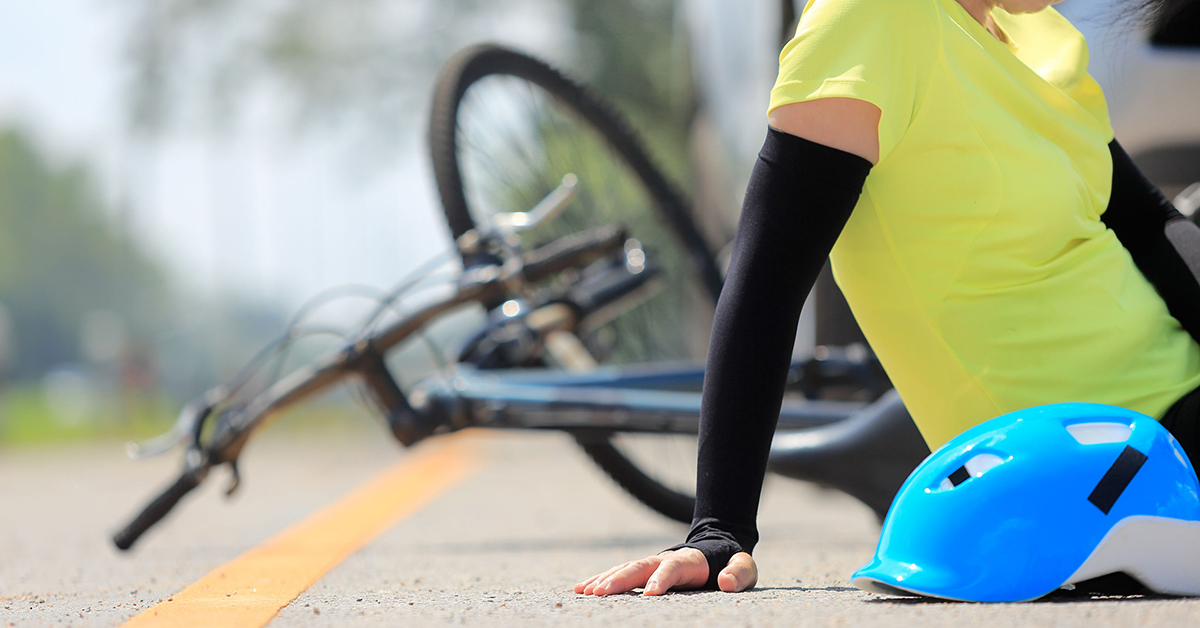 National Bike Month is a time to celebrate and champion cycling. If you live in Massachusetts, you know the cycling spirit is stronger than ever. But that doesn’t mean conditions are always safe.
National Bike Month is a time to celebrate and champion cycling. If you live in Massachusetts, you know the cycling spirit is stronger than ever. But that doesn’t mean conditions are always safe.
In fact, cyclists and pedestrians are at a higher risk now than ever. The National Highway Traffic Safety Administration reports cycling deaths increased 11 percent from 2015 to 2016. Pedestrian deaths rose 9 percent. The AAA Foundation for Traffic Safety recently weighed in with a report on hit and run crashes. The numbers show the toll on pedestrians and cyclists, as well as others on the road.
- There is now more than one hit and run crash every minute in the U.S.
- Nationwide, fatal hit and run crashes have been increasing since 2009, reaching an all-time high in 2016. Some 2,049 people were killed.
- In nearly 65 percent of cases, pedestrians and cyclists were killed.
- All 50 states have hit and run laws, which make it illegal for drivers to leave the scene of an accident.
- According to the Telegram & Gazette of Worcester, there were 186 hit and run crashes involving death in Massachusetts over the 10-year period from 2006 to 2016.
In Massachusetts, leaving the scene of an accident is against the law, under M.G.L. c. 90 § 24 and M.G.L. c. 90 § 26. Drivers can face potential jail time for leaving the scene of a car accident resulting in property damage, even if there is no injury. When there is injury and death, drivers face higher penalties, including up to 10 years in jail if someone is killed.
Beyond the punishment, drivers have a moral obligation to stay at the scene, make sure the victim receives medical attention and help police with their investigation. When they flee, victims have to wait for medical care and the delay could cost them their lives.
In Massachusetts, just in the past month, several pedestrians have been killed by the negligence of hit and run drivers.
In Medford, a real estate agent was walking along Spring Street, when she was fatally struck by a teen driver who was allegedly under the influence of a drug, according to Boston 25 News. The teen – who was operating with a learner’s permit – kept going, then collided with two other people. They were injured, but survived. Their dog was killed in the crash.
Police also responded to tragedies in Lawrence and Revere. In Revere, a woman was struck while walking on Revere Beach Parkway. As she was treated for critical injuries, police searched for the driver. Police in Lawrence made the arrest in a hit and run crash that seriously injured a 30-year-old woman. The 24-year-old driver is accused of operating under the influence when he crossed an intersection, hitting the woman in a crosswalk.
Along with motorists, truck drivers cause an increasing number of hit and run crashes each year. Cyclists and pedestrians can be cut off by trucks and swept under, causing catastrophic injuries and deaths. In Massachusetts, bicycle advocacy groups have pushed for legislation requiring trucks to be outfitted with sideguards. The City of Boston has passed its own truck sideguard regulations.
Drivers who operate rideshare vehicles, such as Uber and Lyft, taxicabs and buses can also cause hit and run crashes. Hit and run crashes can also be caused by teenage drivers, who have less experience and have higher accident rates than other drivers.
As a driver, the best thing you can do is commit to pay attention on the road and travel slowly, giving yourself more time to respond. Turn your cell phone off. Follow traffic laws and look for cyclists and pedestrians on the side of the road. Take special care not to cut cyclists off when turning at intersections. When fatigued, do not drive. Finally, if you are in an accident, do not run. Help the victim by calling 911. That has to be the priority.
About Breakstone, White & Gluck
With more than 100 years combined experience, the lawyers of Breakstone, White & Gluck are experienced in representing cyclists and pedestrians who have been injured in motor vehicle and truck crashes. Our attorneys represent clients throughout Massachusetts, including in Boston, Cambridge and Quincy. We are known for our prompt investigation and aggressive representation for our clients. If you have been injured, learn your rights. For a free legal consultation, call 800-379-1244 or 617-723-7676. You can also use our contact form.
Massachusetts Communities Fight Back Against Traffic Detour Apps
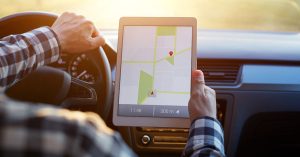
Local communities are restricting road use to stop the flood of drivers who use Waze and other traffic apps.
Commuting is a battle in Massachusetts, full of frustrations and hazards. But residents, communities and lawmakers continue to fight back to improve safety.
On Monday, the state House of Representatives considered a controversial bill proposing new fines for jaywalking and jaywalking while distracted (or as The Boston Globe writes, “Jay-texters”). Meanwhile, WBZ reports communities are closing off roads in response to traffic apps such as Waze and Google Maps.
Jaywalking Bill. On Beacon Hill, Rep. Colleen M. Garry, D-Dracut, has proposed Bill H.1834, which would allow cities and towns to impose stronger penalties against jaywalking. The current penalty is $1, which isn’t much of a deterrent. But this new bill proposes:
- Jaywalkers may be fined $25 for a first offense, $50 for a second offense and $100 for a third or subsequent offense.
- The proposal calls for new and increased fines for pedestrians who violate the jaywalking law and are using mobile devices or earphones. Using a mobile device will increase the fine to $50 for a first offense, $100 for a second offense and $200 for a third or subsequent offense.
Massachusetts is not the only state considering action. In New York, the State Assembly passed a law for New York City to study the problem. As of last month, the City of Honolulu began ticketing pedestrians who are texting or reading from a cell phone. The price? Up to $99 per violation.
While pedestrian texting bans are new, 47 states and Washington D.C. now have laws which ban texting while driving. Puerto Rico, Guam and the U.S. Virgin Islands also have bans. Massachusetts passed its texting while driving ban in 2010.
This is a controversial topic. We will be among those watching the State House this week.
Traffic Detour Apps. WBZ reported on Monday that drivers are continuing to make use of apps such as Waze and Google Maps, which help them find the shortest route (Note: Waze was actually acquired by Google in 2013). But regardless of the specific brand name, police departments say these apps are a safety issue because they change traffic flow and draw large amounts of traffic to residential roads.
Now cities, such as Medford, Cambridge, Brookline and Belmont have taken action, by closing off roads or posting no turn signs.
Here are a few notes for your commute:
- In October, Medford Police announced Bracket Street at Elm Street is residents only on weekdays from 7 a.m. to 9 a.m. and 4 p.m. to 6 p.m.
- Belmont has installed no right turn signs off Brighton Street.
- Brookline has restricted access to several roads off Clyde Street.
- In Cambridge, Fresh Pond Parkway is also closed to through traffic.
These are two stories for every commuter to follow. We will write more about both topics in the weeks and months to come.
About Breakstone, White & Gluck
The Boston car accident attorneys at Breakstone, White & Gluck have over 100 years combined experience representing pedestrians, cyclists, drivers and passengers who have been injured by negligent drivers. If you or a loved one has been injured, learn your rights for seeking compensation. After a car accident, you may incur medical expenses, have to take time off from work and no one can predict how long recovery will take. For these reasons, it is important to contact an experienced Boston car accident lawyer.
For a free legal consultation, contact our attorneys at 800-379-1244 or 617-723-7676 or use our contact form.
Cycling and Pedestrian Safety is Top Concern in Central Square in Cambridge
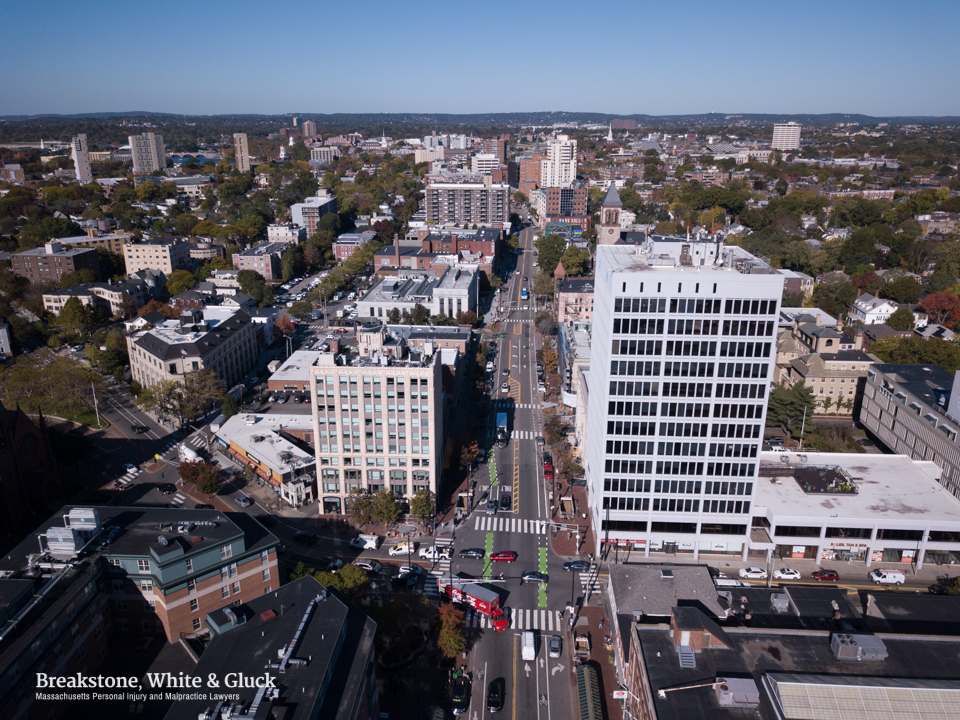
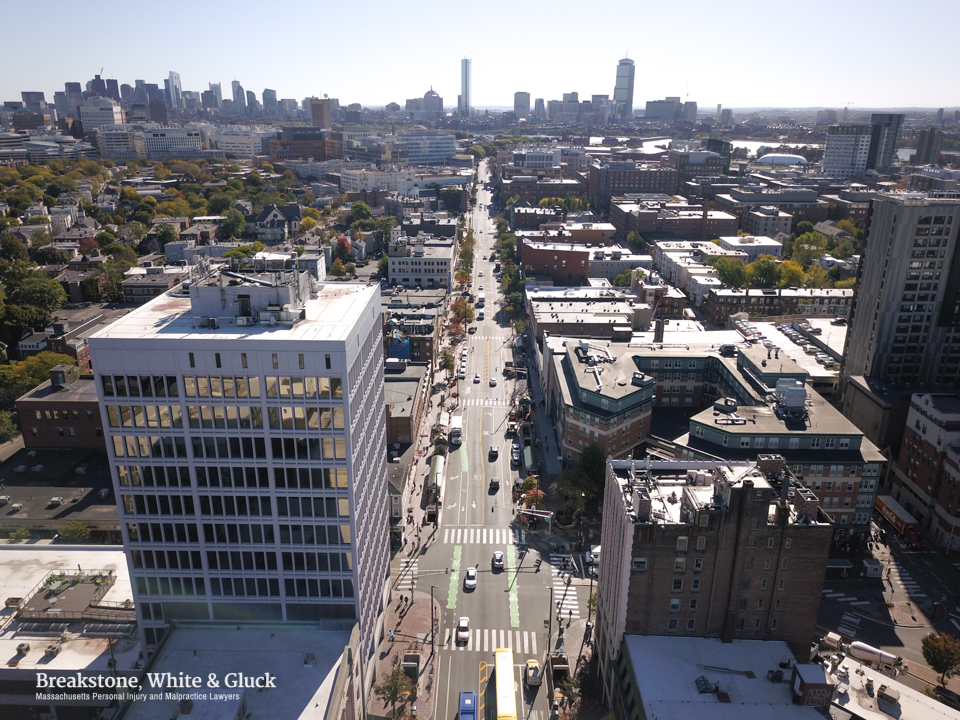
Safety for pedestrians and cyclists is a top concern in Central Square in Cambridge.
Central Square is located around the intersection of Prospect Street, Massachusetts Avenue and Western Avenue in Cambridge. This area is a commuter hub; the Central Square MBTA subway station and bus stop are located here, near Cambridge City Hall. The state of Massachusetts has designated Central Square as an official cultural district, for its mix of theater and arts, restaurants and history. The NECCO building was long part of that history, but these days, 250 Massachusetts Avenue is now the Novartis’ global headquarters. The Cambridge YMCA is there and MIT is nearby.
Over the years, there have been numerous pedestrian and bicycle accidents in Central Square. Central Square was the #1 location for bike crashes in Massachusetts from 2005-2014, according to the Massachusetts Department of Transportation (MassDOT). It was the 5th highest pedestrian crash location. The City of Cambridge has worked to improve safety by improving crosswalks and adding bike lanes across the city. In December 2016, new bike lanes were laid down in Central Square, northbound on Massachusetts Avenue between Sydney and Douglass streets.
We recently went up over Central Square. Please take a look and share this blog with anyone who travels in this area, whether they walk, bike, drive or travel by Uber. From a different angle, we hope you gain a better understanding of the traffic in this area.
We also recently visited Inman Square.
About Breakstone, White & Gluck
At Breakstone, White & Gluck, our Boston personal injury lawyers fight for justice for those who have been seriously injured by the negligence and wrongdoing of others. Our lawyers have been recognized as among the top personal injury and medical malpractice lawyers in Massachusetts and New England. We are committed to protecting cyclists through our Project KidSafe campaign, which has donated over 15,000 helmets to children in the first 5 years. If you have been injured, learn your rights. Contact us today at 800-379-1244 or 617-723-7676 or use our contact form.


